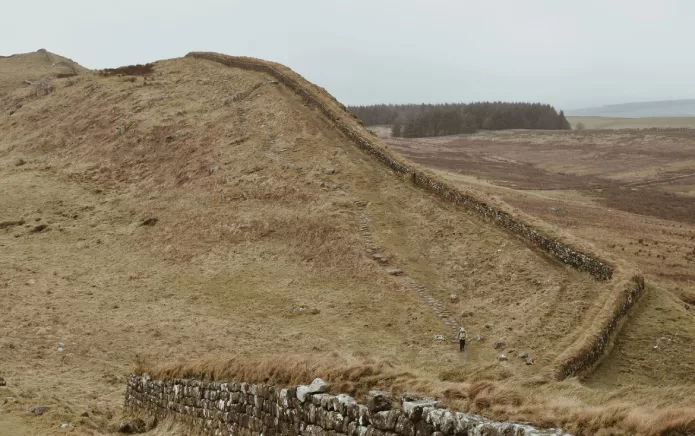Hadrian’s Wall spans 70 miles across Northern England – the relics of which remain 1,900 years after it was built.
The charity, which is responsible for managing over 400 historical monuments, buildings and places across England, recently listed seven locations that are “linked to England’s queer history”.
Other locations identified by the English Heritage as part LGBTQIA+ history include Chiswick House, Walmer Castle, Farleigh Hungerford Castle, Eltham Palace, Rievaulx Abbey and Ranger’s House.
On their website, English Heritage reflected on the “lasting mark” Emperor Hadrian “left on Britain” and his “intense adoration for his male lover Antinous”. They further explained: “To understand Hadrian’s Wall you have to understand the Roman emperor who built it – his career, his life and the times in which he lived.”
Whilst Hadrian may have been married to Trajan’s great-niece Sabina Augusta, he was known for his relationship with the young Bithynian male, a practice which was common for Roman men, according to their website.
Interested to know more about what the Romans did for us? 🤔
Find out 12 other ways the Romans left their mark across the country ➡️ https://t.co/qwD2WItiSr
📸📍 Hadrian’s Wall pic.twitter.com/j13T7TTHu2
— English Heritage (@EnglishHeritage) February 28, 2024
A Roman man was at liberty to choose sexual partners as long as he remained the dominant one in any sexual encounter. Antinous joined the emperor and his wife on the tours of his empire, which he took control of in 117 AD. Tragically, Antinous drowned in the Nile in October 130 AD, at around 20 years old.
Hadrian was reported at the time to have “wept for him like a woman,” according to National Museums Liverpool.
In a state of adoration and despair for his young lover, Hadrian founded the city of Antinoöpolis close to the location of his tragic death to immortalise his memory. He went further to make Antinous out as a God-like status, and placed statues of his image across the empire, something that was considered highly abnormal for someone outside of the imperial family.
Images of Antinous were subsequently used in private homes as a discreet nod to homosexuality. After all, they have been referred to as “the most famous homosexual couple in Roman history.”
Declaring the wall a piece of LGBTQIA+ history caused quite a stir online with the non-LGBTQIA+ crowd – academics criticised the charity for their “totally misguided” link.
Professor Frank Ruerdi told The Daily Mail: “English Heritage appears to be in the business of reading history backwards and discovering LGBTQ culture in the most unlikely places.”
Jeremy Black, an emeritus professor of history at Exeter University, added: “The idea that Hadrian’s Wall is an exposition of what can be seen as queer history is totally misguided.”
In contrast, human rights campaigner Peter Tatchell told the publication it is “important that this hidden history is revealed.”
